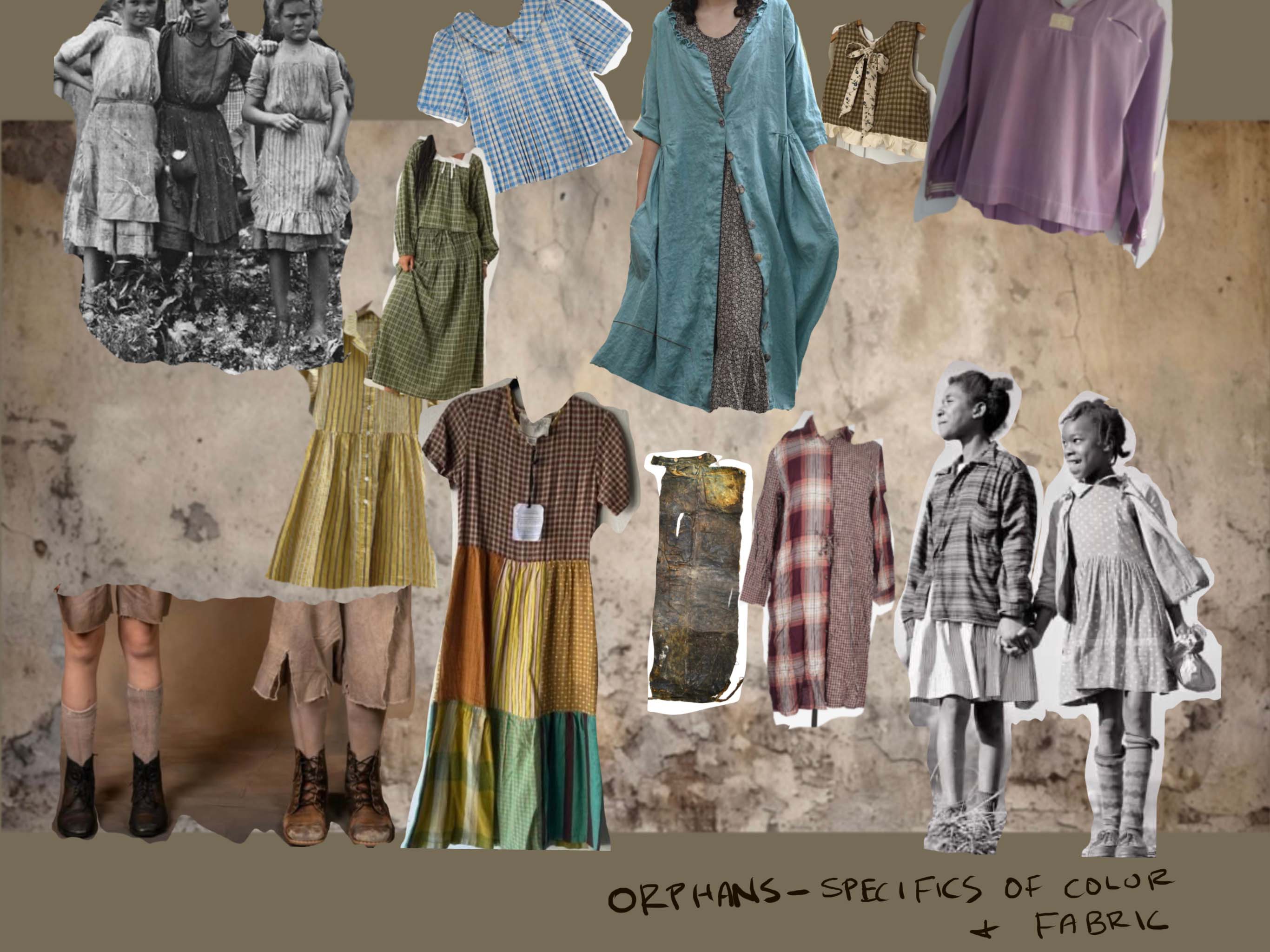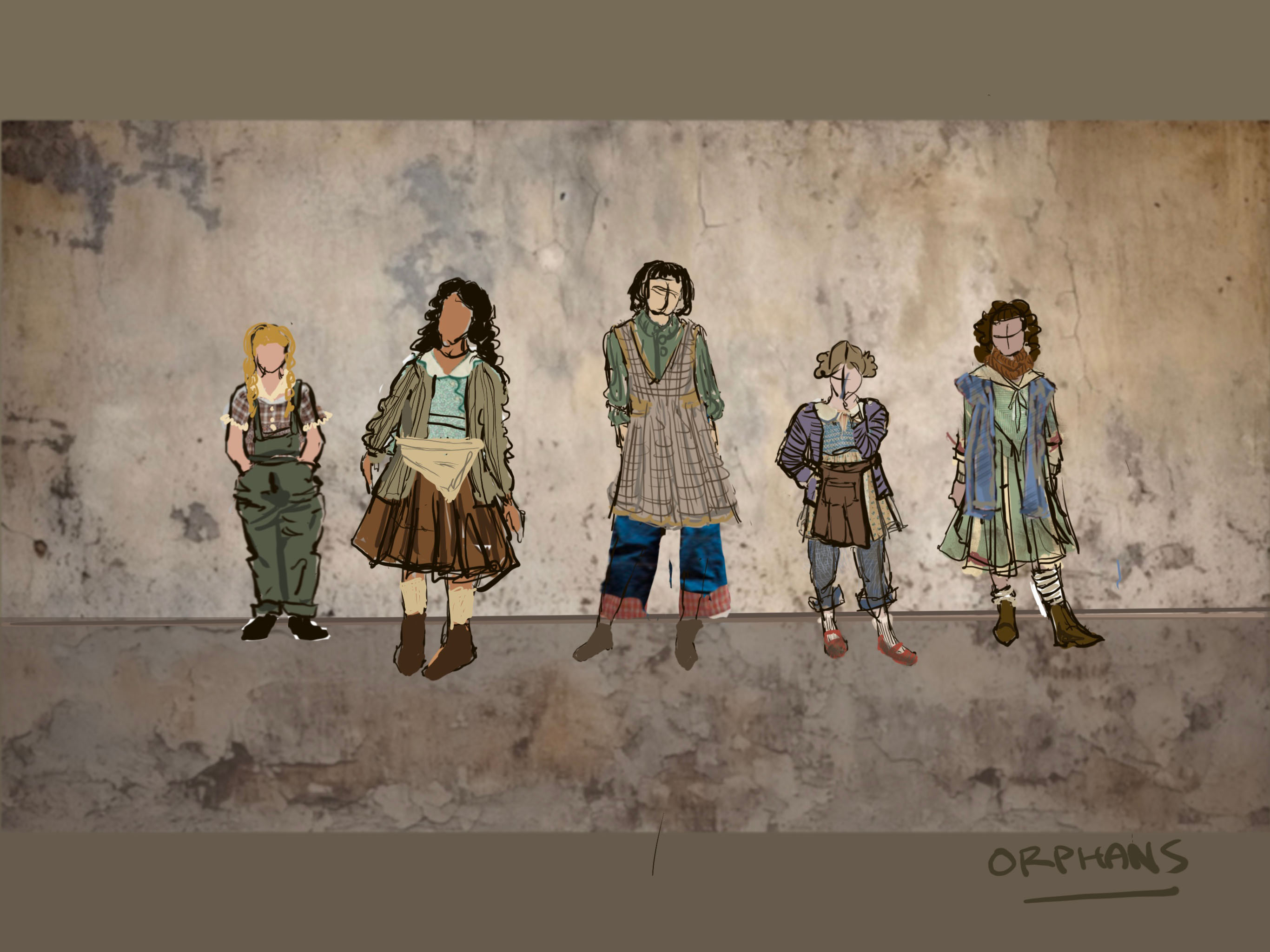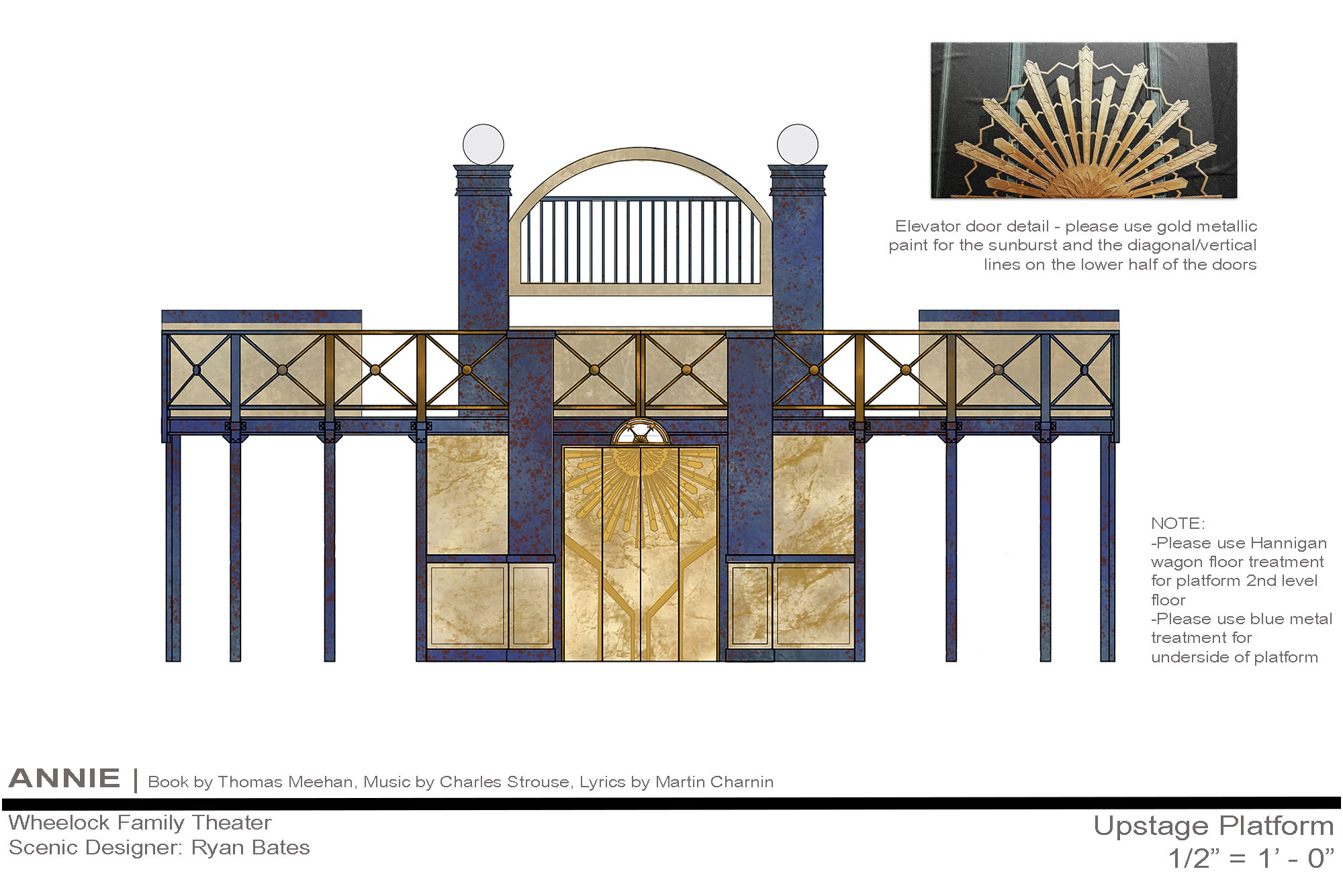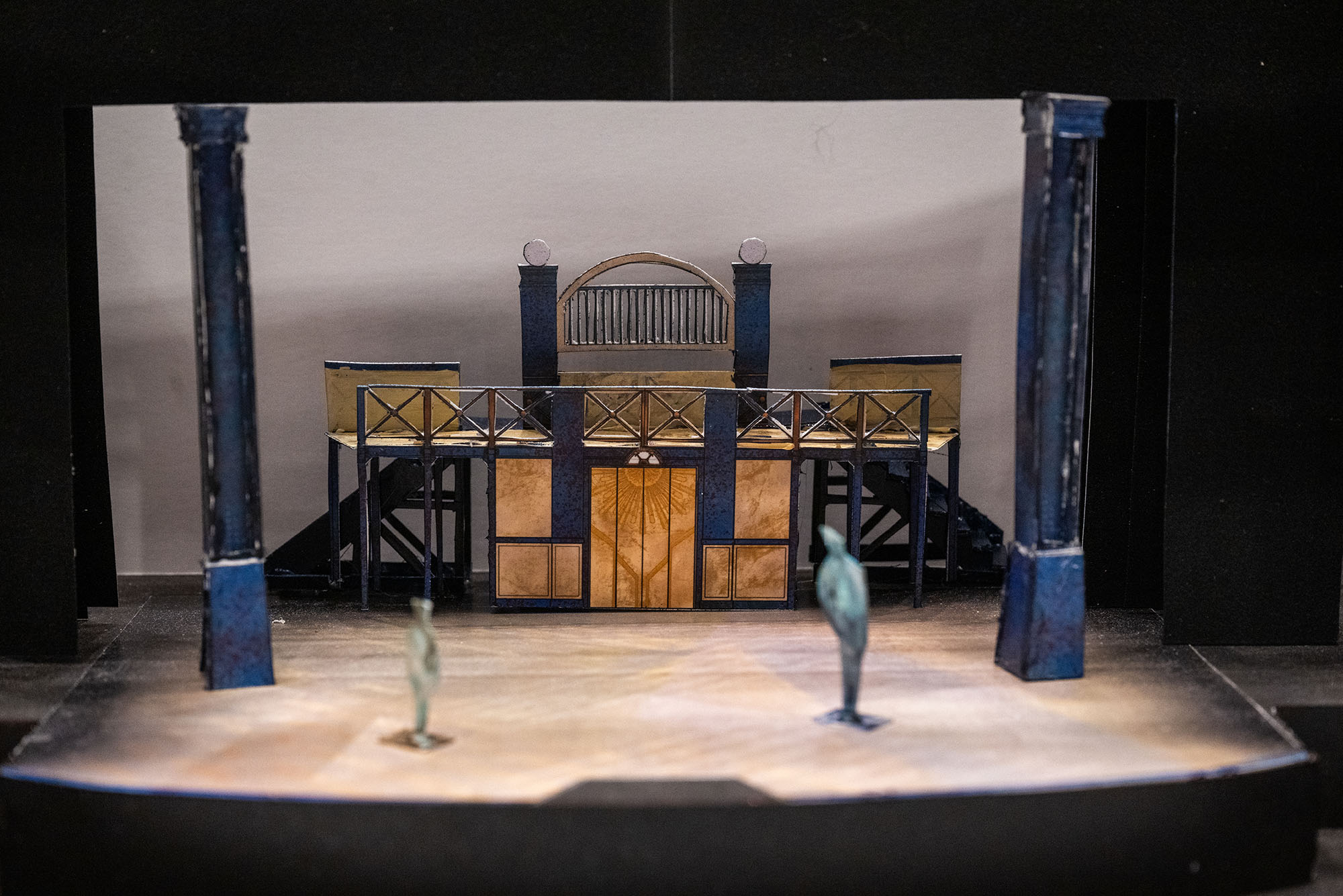A Hard Knock Life? BU Designers Find Joy in Bringing Annie to Wheelock Family Theatre
CFA alums have collaborated to convey show’s grittiness, opulence, and brightness

A scene from Wheelock Family Theatre’s production of the Tony Award–winning musical Annie, running through December 22.
A Hard Knock Life? BU Designers Find Joy in Bringing Annie to Wheelock Family Theatre
CFA alums have collaborated to convey show’s grittiness, opulence, and brightness
To say that Chloe Moore has had a busy fall is an understatement. The costume designer for Wheelock Family Theatre’s new musical production of Annie, she has created nearly 100 costumes for a cast of 28. For Moore (CFA’14), who won an Elliot Norton Award last year for best costume design for her work on The Spongebob Musical at WFT, Annie has put to the test all the skills she acquired as a Boston University College of Fine Arts master’s student in the graduate costume design program.
“It is a greeeat big show,” Moore says, laughing. “With an average of 6 looks for each of the 12 ensemble members and 4 looks for each of the principal characters, it’s one of the largest shows I’ve ever designed.”

Before she started sketching, Moore sat down with WFT executive director—and Annie’s director—Nick Vargas and the rest of the design team, all CFA School of Theatre alums, to create a concept for the show.
Vargas and his team—in addition to Moore, set designer Ryan Bates (CFA’15), lighting designer Jessica Elliott (CFA’15), and sound designer Gage Baker (CFA’24)—brainstormed to create a visual narrative that traces the emotional arc of the show about a plucky, redheaded orphan living in New York City during the Depression.



The overall design of Annie is built around the idea of hope emerging from hardship, Vargas says. “We wanted every design choice to reflect that central theme: that light can exist even in the darkest of times.”
For Moore that meant historical research to evoke the world of Depression-era Manhattan. She studied children’s media of the 1930s, including watching the original Little Rascals film shorts, made between 1922 and 1944. Another source of inspiration: photographs by Lewis Hine, who chronicled child workers in the 1930s.
To create the sets, Bates began by watching the 1982 film version of Annie, starring Albert Finney, Carol Burnett, and Tim Curry. He studied images of homes that millionaires from that time period would have lived in as well as photographs of orphanages. He was surprised to discover that many children’s homes were bright and airy.


Sketches for the set of WFT’s Annie, designed by Ryan Bates (CFA’15) (left) and the model for the production (right). Sketch courtesy of Bates; model photo by Cydney Scott
“We started to create this world of both light and shadow and ground and air,” Bates says.
For lighting designer Elliott that meant introducing warmer colors in settings that looked cooler before Annie’s arrival, to underscore the joy and optimism she elicits from those around her. “As lighting designer, I must catch all the information the other creatives may have at any given time,” she says, ”from the colors of the costumes and scenic paints to overall scenic structure to soundscapes that may be created to how the director and/or choreographer wants to use the space. Theater is very much a team sport.”
Light plays a key role in the design of the show, Vargas says. “Light becomes a symbol of Annie’s hope throughout the production. It shifts and grows as her world expands, culminating in a finale that genuinely feels luminous.”

The size of the cast has presented special challenges for sound designer Baker, who also won an Elliot Norton Award last season for The Spongebob Musical. “Anytime you have a large cast, especially one that includes children, the biggest challenge is maintaining clarity and balance,” Baker says. “Everyone needs to be heard, but the sound should feel natural and cohesive.”
His work involves careful mixing and mic placement as well as taking and tweaking acoustic measurements, designing large loudspeaker systems for the audience, and creating custom sound effects and microphone systems that can be hidden in wigs and costumes.
But at the end of the day, Baker says, his work comes down to one goal: “Connect the performers to the audience, and do whatever is necessary to help them tell their story.”
The members of the design team say they were drawn to working on Annie because of Wheelock Family Theatre’s mission.
“Wheelock is a place where the focus is squarely on the audience,” Baker says. “We want to create shows that aren’t just accessible entertainment, but also have the power and quality to inspire the next generation of theatergoers and artists.”
Annie runs weekends through December 22 at the Wheelock Family Theatre, 180 Riverway, Boston. Performances are Fridays at 7:30 pm, Saturdays at 2 pm and 7:30 pm, and Sundays at 2 pm. Ticket prices range from $26 to $52. BU students, faculty, and staff are invited free of charge opening weekend (to reserve your ticket, use code “BUOpen”). BU students can purchase $15 tickets to any performance using the code “College.” Faculty and staff receive a 20 percent discount on full-price tickets with code “BUStaff.” Purchase tickets here, call 617-353-3001, or email WFTtix@bu.edu. ASL interpretation/audio description performances are Sunday, December 7, at 2 pm, Thursday, December 11, at 10:30 am (student matinee), and Friday, December 12, at 7:30 pm. The production is recommended for audiences ages three and up.